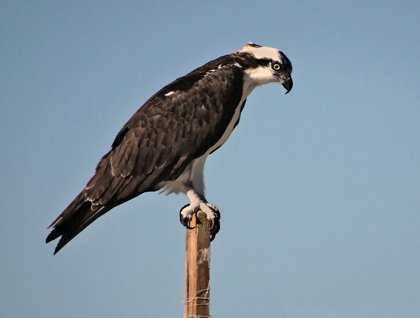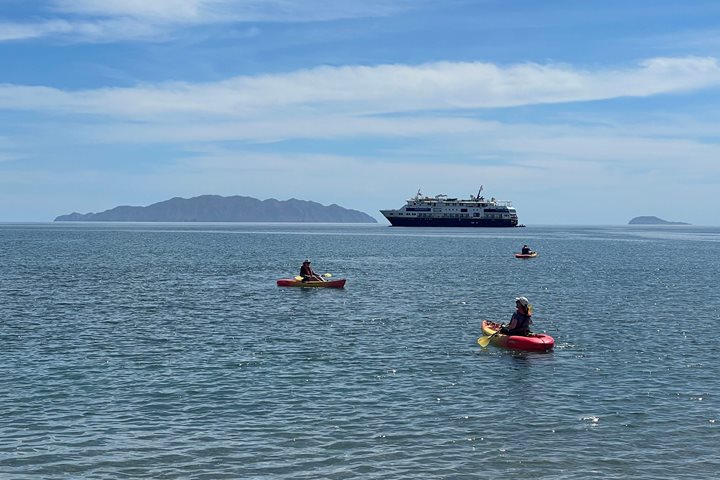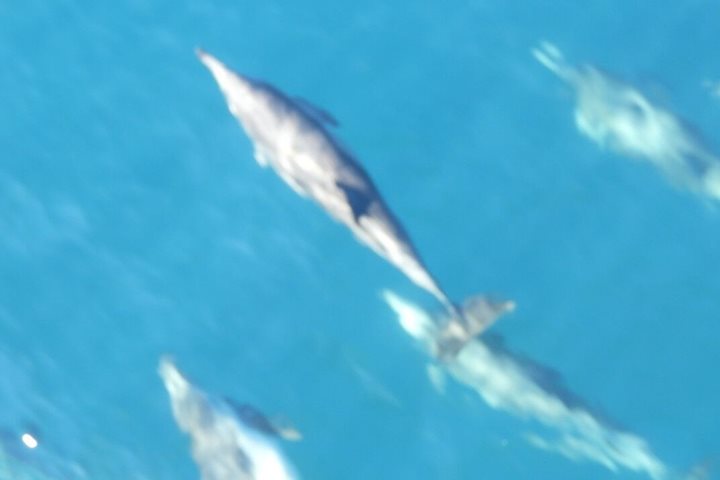After a smooth night at sea, the National Geographic Sea Bird approached the tip of the Baja California Peninsula and arrived at the iconic Land’s End, as the sun emerged with a striking green flash. Early morning light bathed the towering granitic rocks and beautiful arch of Friar’s Rocks. The ship lingered here for us to take in the striking scenery and the sounds of barking sea lions before continuing into the Sea of Cortez towards San José del Cabo. After the ship was secured at the dock, we set off to explore the shops, the mission, and a glass-blowing facility where artists displayed their techniques. In addition, there was an opportunity to walk at a wetland oasis where aquatic birds as well as terrestrial species are lured to the fresh water and adjacent habitats. We spotted ospreys, Gila woodpeckers, brilliantly colored orioles, and plenty of egrets, herons, and other birds.
For the afternoon, we sailed off in search of humpback whales. Fortunately, we were not disappointed. It was fascinating to compare these baleen whales with their gray whale cousins that had become so familiar during the first part of our voyage. Many of the animals that we observed appeared to be in competitive male groups. They energetically surfaced, at times with their throats enlarged with water as a display. The whales engaged in tail throws, pec slaps, and full body breaches as the afternoon progressed. It was marvelous to watch as they arched and fluked over and over again. Humpback tails range in color from almost white beneath, as in this photo, to nearly black, and the patterning is distinctive enough that researchers can use this to identify individuals.
Cocktail hour, complete with ceviche, took place outside on the top deck as the sun set and we motored east and then north throughout the night. The engines hummed as we headed towards desert islands, kayaking, and snorkeling adventures that lay ahead.







